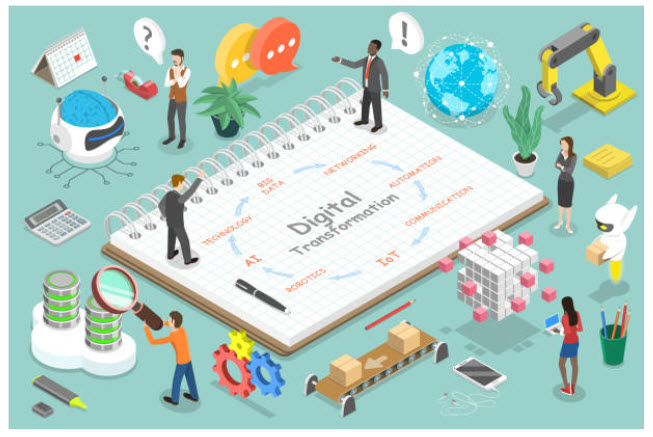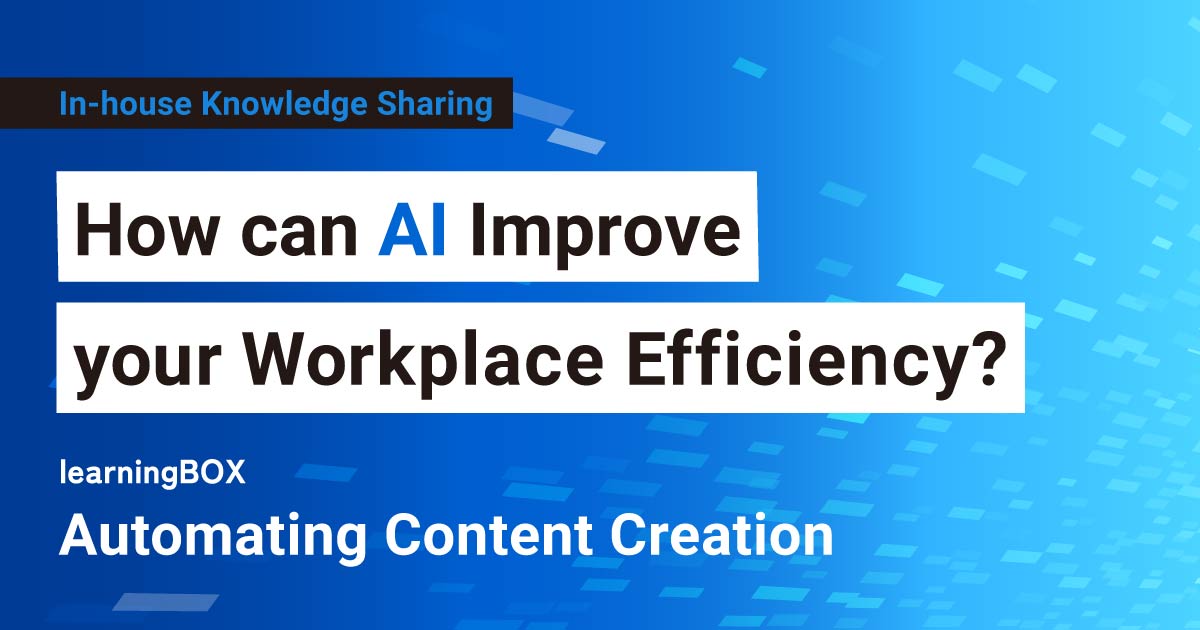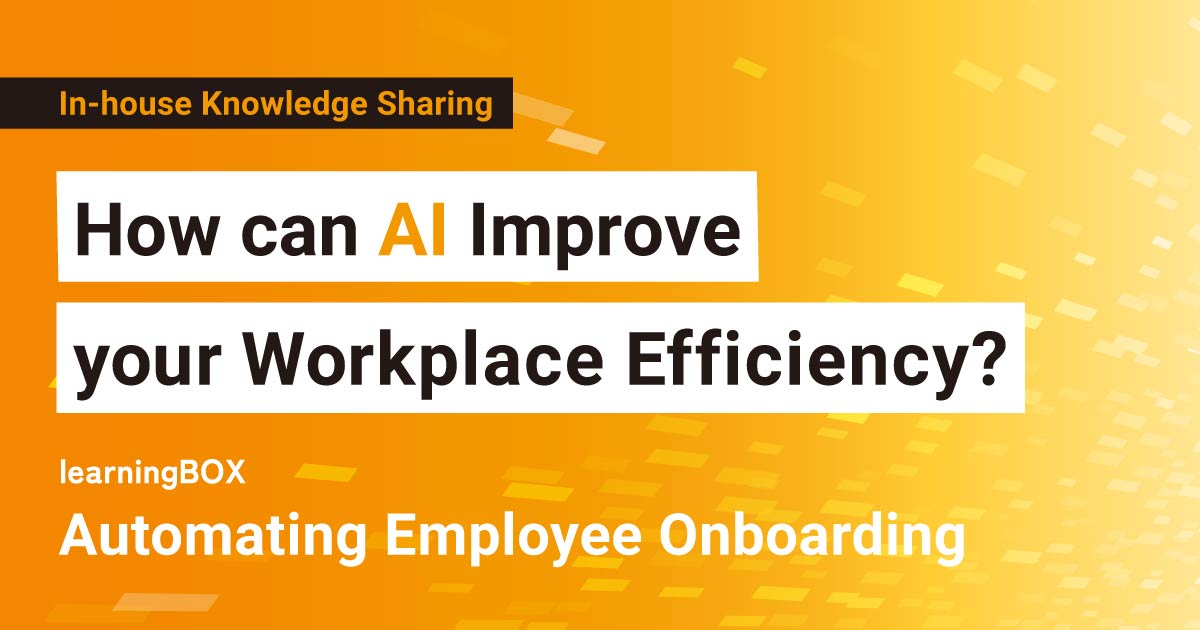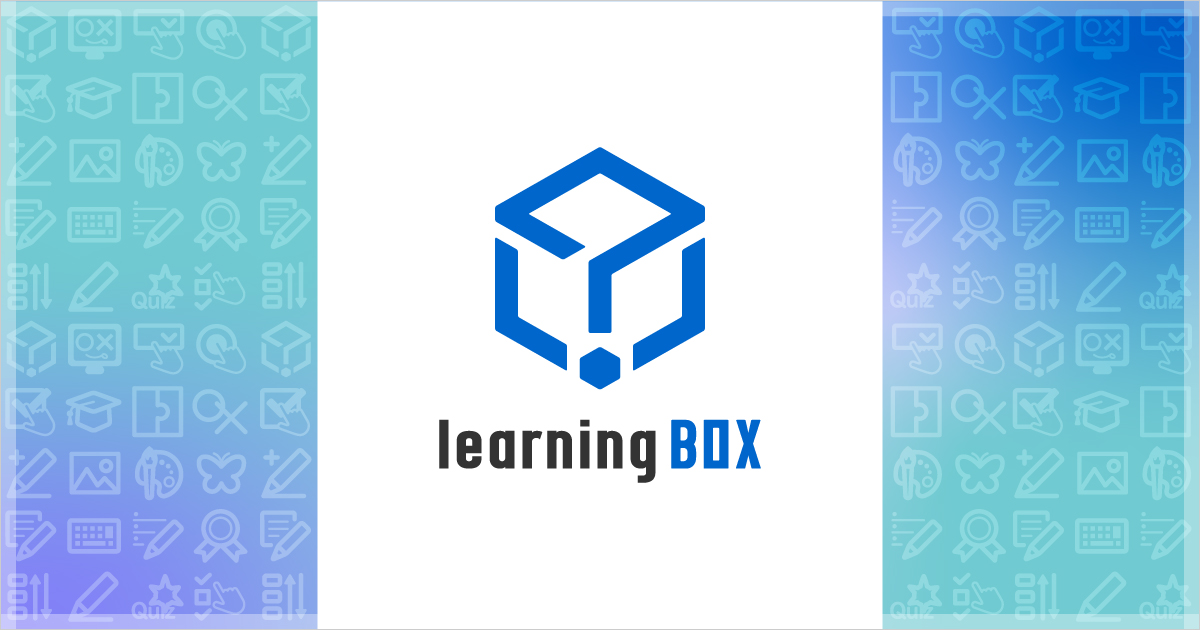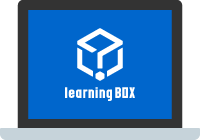[2021 Preliminary Report] Corona Damages Accelerate Corporate Initiatives for DX
2021 Flash Report] Corporate DX Initiatives Accelerated by the Corona Disaster
My name is Kidaoka and I am in charge of marketing!
Recently, I have been seeing the term "DX (Digital Transformation)" more and more frequently on the Internet and TV.
Many of you may have a vague idea of the concept of DX, but may find it difficult to explain in words.
What is the difference between DX and conventional IT utilization? Why is DX being promoted in Japan? I am sure that many of you have questions such as "What is the difference from the conventional use of IT?
The spread of the new coronavirus around the world has prompted many companies around the world to introduce and utilize IT technology to streamline and review their operations.
In Japan as well, many companies are advocating the promotion of DX.
In this article, we will introduce some points to be aware of in order to promote DX in the future, including an overview of DX, which is currently the focus of attention, as well as its merits and demerits.
Table of Contents
1. DX (Digital Transformation) that companies are now paying attention to
2. 2025 Cliff
3. Advantages for companies to introduce DX
4. "learningBOX," the optimal human resource education tool for the DX era
5. Summary
DX (Digital Transformation) is now the focus of corporate attention.
DX is a term that describes "transformation through digital" and refers to the use of IT information technology to transform people's lives for the better.
DX is a business term used by companies responding to changes in the digital society as a radical initiative to transform their business models and operations by operating digital technologies such as AI, IoT, and Big Data.
A simple explanation of the term here is the concept of "creating new value in existing business processes and business models.
In recent years, the term DX has been widely used in the definition of the term "corporate transformation to cope with the digital age by using the latest digital technologies.
The Beginning of DX
It is said to have started in 2004, when Professor Erik Stolterman of Umeå University in Sweden proposed that "the penetration of IT will change people's lives for the better in all aspects.
The term DX began to permeate Japan in the late 2010s.
The Ministry of Economy, Trade and Industry (METI) guidelines define DX as follows
▼ According to the "DX Promotion Guidelines Ver. 1.0 (December 2008)" published by the Ministry of Economy, Trade and Industry (METI), DX is defined as follows.
It recommends that "DX is the process by which companies respond to drastic changes in the business environment and use data and digital technology to transform their products, services, and business models based on the needs of customers and society, as well as their operations themselves, organizations, processes, and corporate culture and climate to establish a competitive advantage."
This is the definition in the "Guidelines for Promoting Digital Transformation (Guidelines for Promoting DX).
In order to realize DX, the first prerequisite is that "digitization and digitalization" are in progress.
What is digitization?
Digitization is the process of digitizing and streamlining some of the business processes that are currently performed on a daily basis.
It is explained as the use of information technology to improve efficiency, rationalize operations, and add value.
It is the process of making analog items digital information, such as by making a business process that used to be carried out with paper and a stamp paperless.
What is digitalization?
Digitalization is the creation of new business value and customer experience by transforming the company's business model through the use of digital technology.
Therefore, digitalization mainly refers to "digitization" itself.
The movement of "digitization of business operations" undertaken by a company can be considered as digitalization, and when the digitization of business operations undertaken by a company has an impact on society as a whole, it is defined as DX.
*Generally, digitization is seen as the next phase of digitization.
The Relationship between Digitization and Digitization
Digitization can be broadly classified into two categories: digitization and digitalization.
These two can be easily understood if we consider DX as a goal and one of the phases leading up to it.
Although there is a big difference between the two terms in terms of local and global digitization, the fundamental concept and goal are the same.
For a more detailed explanation of the difference between digitization and digitalization, please see this article.
The 2025 Cliff.
The 2025 cliff refers to the economic losses estimated to occur if DX is not realized not only in 2025 but also beyond that year.
Existing IT systems used in business operations will become "old, bloated, and complex," making it difficult to apply them in business models that match the times.
As a result, there is concern that this will reduce the competitiveness of companies and cause significant economic losses.
Around 2025, various changes related to IT information systems are expected to occur.
According to the Ministry of Economy, Trade and Industry (METI), companies will lose out to global digital competition, system maintenance and management costs will rise even higher, and losses due to cyber security, accidents, and disasters will cause huge losses amounting to 12 trillion yen annually, according to the Ministry of Economy, Trade and Industry (METI).
DX tips for overcoming the 2025 cliff
DX is being advocated as necessary for Japanese companies to overcome the "2025 cliff.
DX is a digital reform that transforms business processes and business models using digital technology and creates new business models and growth models beyond them.
Advantages for companies to implement DX
In today's Japanese companies, awareness of the need for DX is growing, but many companies are still searching for a specific direction on how to transform themselves.
The benefits of implementing DX are not limited to cost reduction and productivity improvement in business.
By transforming the business model itself, companies can gain a competitive edge and increase their chances of survival in business.
Advantage 1: Increased business productivity
The introduction of DX will improve business productivity, and as a result, business profitability can be expected to increase. According to the law of increasing returns, "doubling the scale of production improves production efficiency and doubles production volume.
Merit 2: Leads to business that responds to changes in consumer behavior
In today's world, it is essential to respond to DX in order to develop products that sell.
Big data and communication technologies such as AI and 5G, which are utilized in DX, have a great impact on consumer behavior. In order to respond to such era and consumer behavior, DX-enabled products will naturally be needed in the future.
If we can prepare new services that satisfy customer demand, our business may expand at once.
Another advantage of working on DX is that it enables businesses to respond to changes in consumer behavior.
Advantage 3: It will lead to the enhancement of BCP (Business Continuity Plan)
Despite the impact of the new coronavirus, there were companies that implemented their BCP (Business Continuity Plan) and increased their profits, and the Nikkei Shimbun reported that "whether or not a company was engaged in DX was the difference between light and dark.
For example, furniture retailer Nitori and McDonald's Japan posted the highest profits during the Corona Disaster by strengthening their online sales systems.
Walt Disney and Wal-Mart in the U.S. are also supplementing their original mainstay customer attraction with online sales and video streaming businesses.
It is important to work on DX as early as possible in order to be prepared for disasters that will require BCPs in the future and to stand out from rival companies.
Reference: From "DX Reforms, Companies Clearly Different in Corona," Nihon Keizai Shimbun morning edition, June 4, 2020.
Five Common Features of Successful DX Companies
What are the characteristics of companies that are succeeding in DX? According to a McKinsey & Company survey, there are five common characteristics.
The five common characteristics are
The right leaders are digitally savvy and in place in each department.
They are improving overall organizational capacity in anticipation of future changes in the workforce.
They are implementing new ways of working to improve employee productivity.
They are constantly upgrading their company by introducing digital tools on a daily basis.
They are gradually transitioning to the new system, while reviewing the old one, rather than introducing new digital systems at random.
Reference: From "What do companies that have successfully completed digital transformation have in common?
Leading DX companies are performing well
According to the "Digital Transformation Issues (DX Issues)" survey released in August 2008 by the Ministry of Economy, Trade and Industry in collaboration with the Tokyo Stock Exchange, advanced companies engaged in DX initiatives are performing well.
Looking at the average return on equity (ROE) over a three-year period, more than 70% of the companies in the "DX Issues 2020" category, which were recognized for their excellent DX initiatives, achieved ROE of 8% or higher.
Reference: From Digital Transformation Issues (DX Issues)
LearningBOX, the optimal human resource education tool for the DX era
The spread of the new coronavirus has made it imperative for many companies to identify and review their fixed costs and expenses in order to ensure business continuity.
In light of this situation, it is highly likely that costs related to human resource development, education, and training will also be subject to cost review in the future.
In the wake of the recession caused by the Corona disaster, many companies are considering and implementing cost reviews and reductions in expenses and fixed costs.
learningBOX is an e-learning system recommended for new employee training and in-house training!
Our e-learning system is sold at a price range (from 33,000 yen per year for 100 users) that can be introduced not only to large companies, but also to small businesses and small organizations, and you can start e-learning from 30,000 yen per year, 1/10 of the industry price.
You can use the free plan to fully grasp and check the usability of the system.
If you have any of the following problems, learningBOX can solve them!
We can't take the time to gather all the trainees together for group training.
We don't have the budget to hold training sessions over and over again.
There is a difference in the level of knowledge acquired by each employee.
We have conducted major training programs, but as time goes by, the knowledge fades and it takes time for it to take root.
Can people use the system even if they have no knowledge of IT?
If there is a difference in usage depending on the age group, it is difficult for the company to introduce and manage the system.
Tatsuno Information System Co., Ltd. is an IT system development company headquartered in Tatsuno City, Hyogo Prefecture.
▼Let's take a look at learningBOX application scenarios
learningBOX is an e-learning system that has been introduced in a wide variety of industries.
On this page, we introduce various business scenarios in which learningBOX is used, such as "in-house training, certification examinations, and sales of learning content.
The concept of learningBOX is "low cost and easy"!
learningBOX," Tatsuno Information System's LMS (Learning Management System), is designed not from the developer's perspective, but from the user's perspective, and it has a reputation for its ease of use, for example, even those who are not good at computer operation can intuitively touch and learn its operation.
In addition, we listen to the requests of customers who actually use learningBOX and develop new functions and modifications to existing functions on a daily basis. Compared to other companies, none of them upgrade their functions as frequently as we do.
What has changed since we introduced learningBOX? Improvements have been made!
⇒Click here for a list of LearningBOX case studies.
Conclusion
In this article, we have introduced some points to be aware of in order to promote DX in the future, including an overview of DX, which is currently the focus of attention, as well as its merits and demerits.
DX is an essential measure for companies to survive in the future.
In order to promote DX, it is necessary to introduce new business models, products, and services as a company-wide effort, not merely as an IT initiative.
In order for a company to continue to grow, it is important to create a system that supports each employee in learning and fosters an attitude and organizational culture that flexibly responds to change and takes on challenges.
We, of course, use learningBOX for our training, but most of our teaching materials are created in-house.
LearningBOX can be used for up to 10 accounts for an unlimited period of time, free of charge.
Please try our easy-to-use system, which can be used without any instruction manual!


